Calm spaces in your home can significantly enhance your overall well-being. These tranquil environments foster relaxation and provide a sanctuary from the stresses of daily life. Designing beautiful and simple calm spaces gives you a dedicated area to unwind, helps to reduce stress, promote mental clarity, and improve emotional health.
Let’s start with an introduction to calm spaces and some key principles.
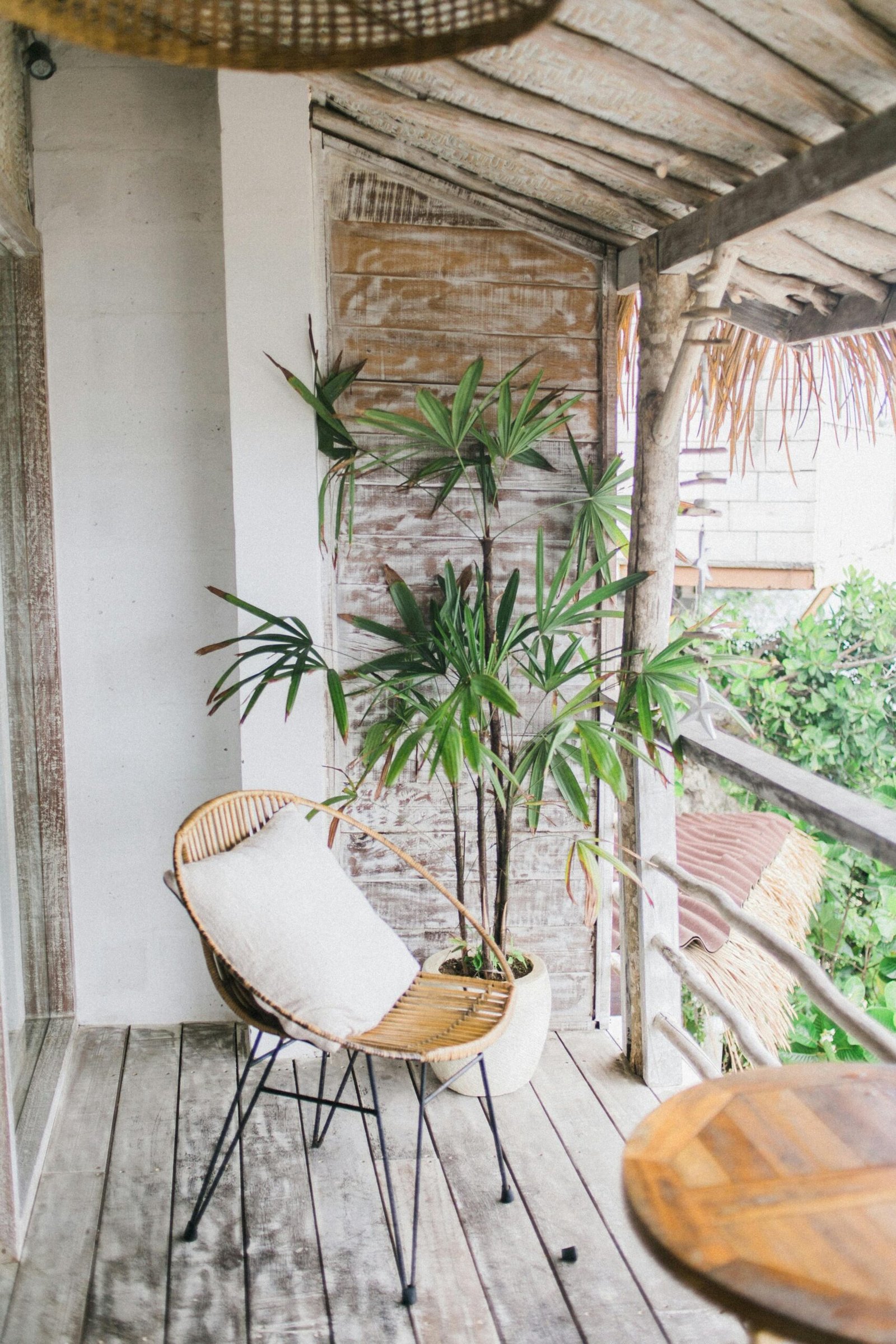
Introduction to Calm Spaces
Want to create calm spaces, right? Check out these key principles for making peaceful environments:
- Comfort and Security: Spaces should evoke feelings of comfort and belonging.
- Decluttering: Keeping the area free from unnecessary items.
- Thoughtful Furniture Arrangement: Ensuring optimal flow and functionality.
- Personal Retreats: Designating specific areas for relaxation.
- Color Schemes: Using calming colors to set a serene backdrop.
- Natural Elements: Incorporating plants and nature-inspired decor.
- Ambient Lighting: Mastering lighting techniques to create soothing atmospheres.
- Noise Reduction: Minimizing noise distractions.
- Organized Spaces: Maintaining order with organizational tools.
- Scent Therapy: Enhancing relaxation with pleasant scents.
There you have it. 10 key principles to follow. In the following sections, we’ll explore each one of these principles to help you get started.
Comfort and Security are Key for Calm Spaces
Creating a sense of comfort and security is foundational when designing calm spaces in your home. This starts with handpicking furniture that not only looks good but also feels inviting and supportive.
Imagine sinking into a plush armchair after a long day or curling up on a sofa surrounded by soft cushions—the right furniture makes all the difference.
And, what is comfortable for one person may not be comfortable for another. That’s why you’ll want to personally try out your furniture before making any major purchases.
Choosing Comfortable Furniture
Besides comfort, ergonomics are vital. Ergonomic furniture supports your body in a way that reduces strain and promotes relaxation. Whether it’s an office chair that conforms to your back or a lounge chair designed to cradle you, ergonomic choices can significantly impact your comfort levels.
Materials play a crucial role in enhancing comfort. Soft fabrics like cotton, linen, and velvet are cozy and inviting. These materials create a tactile experience that encourages relaxation. Think about adding:
- Plush sofas and chairs: Opt for pieces with deep seats and cushioned backs.
- Soft-textured upholstery: Fabrics like chenille or microfiber can add an extra layer of coziness.
- Natural materials: Incorporating elements like wood or rattan can bring warmth and texture.
Cushions and throws may be your partner’s worst nightmare (just kidding), but don’t let that stop you if they help you achieve your desired comfort levels. They add both physical comfort and aesthetic appeal to your living spaces.
Consider:
- Cushions: Mix different sizes, shapes, and textures to create a layered look that’s both stylish and functional.
- Throws: Drape them over sofas or chairs for added warmth during colder months.
Creating a serene environment isn’t just about the big pieces; it’s the little touches that complete the picture. By focusing on these aspects, you ensure that every part of your home feels like a haven of tranquility.
When thinking about calm spaces, it’s essential to consider how each element contributes to the overall sense of peace and well-being in your home. The next step involves strategically arranging this comfortable furniture to design intimate areas where you can truly unwind.

Creating Calm Spaces
Design intimate spaces with thoughtful furniture arrangement. This can transform any room into a sanctuary. One effective way to achieve this is by creating cozy nooks that invite relaxation and solitude. Think about positioning armchairs or small sofas in corners, paired with side tables and soft lighting.
For those who enjoy getting lost in a good book, consider setting up an inviting reading corner. A comfortable chair, a blanket, and a well-placed lamp can make a world of difference. Add a small bookshelf nearby to keep your favorite reads within arm’s reach.
Meditation spots can also enhance the tranquility of your home. Choose quiet areas where you can place floor cushions or yoga mats. Surround these spots with elements that induce calmness—plants, candles, or gentle water features.
Incorporating these intimate spaces into your home design not only boosts comfort but also creates a sense of security and belonging. The psychological benefits of feeling at home in such environments are immense, promoting overall well-being and mental clarity.
Decluttering Your Space for Mental Clarity
Clutter can be your mind’s worst enemy. It sneaks up on you, filling every nook and cranny until your once peaceful abode feels more like a chaotic labyrinth.
The impact of clutter on mental health and well-being is well-documented. A cluttered space often leads to a cluttered mind, increasing stress and anxiety levels.
Steps to Declutter Effectively
- Start Small: Tackling an entire house can be overwhelming. Begin with one room or even just one drawer.
- Sort and Categorize: Create piles for items to keep, donate, recycle, or discard.
- Use the “One-Year Rule”: If you haven’t used something in the past year, chances are you won’t miss it.
- Organize as You Go: Invest in storage solutions like bins, baskets, and hooks to keep things tidy.
- Digitize Documents: Reduce paper clutter by scanning important documents and storing them digitally.
- Daily Maintenance: Spend just 5-10 minutes each day tidying up to prevent buildup.
Maintaining a Minimalist Approach
Adopting a minimalist mindset can help maintain order long-term:
- Be Intentional With Purchases: Before buying something new, ask yourself if it’s necessary.
- Practice “One In, One Out”: For every new item you bring into your home, remove one.
- Limit Sentimental Items: Keep only those that truly bring you joy.
Decluttering isn’t just about making your home look neat; it’s about creating a sanctuary that promotes mental clarity and peace of mind. By adopting these strategies, you’ll find that less truly is more for living a serene life at home.
Optimal Flow and Functionality
The way you arrange your furniture can significantly affect the mood and functionality of a space. By optimizing your layout, you can create an environment that feels both inviting and efficient.
What do we mean by optimizing your layout?
1. Mood
A well-thought-out layout can promote relaxation and reduce stress. For example, positioning a comfortable chair near a window not only provides natural light but also offers a serene spot for reading or contemplation.
2. Functionality
The arrangement should facilitate simple movement and access to essential items.
Think about how you use each room daily. Is the path between your kitchen and dining area unobstructed? Can you easily reach your favorite book from your reading nook?
3. Flow
Good flow ensures that spaces are intuitive and accessible. To ensure good flow, arrange furniture in a way that guides people naturally through the room without causing congestion or awkward transitions between areas.
Techniques for Maximizing Space with Strategic Furniture Placement
Creating a layout that maximizes space involves thoughtful planning. Here are some tips:
- Use Multi-functional Furniture: Pieces like ottomans with storage compartments or sofa beds can save space while adding functionality.
- Create Zones: Divide large rooms into distinct areas for different activities. Use rugs, lighting, or furniture placement to define these zones clearly.
- Embrace Vertical Space: Utilize tall bookshelves or wall-mounted storage to keep the floor area clear and open.
- Keep Pathways Clear: Ensure there’s enough space for easy movement around the room. Avoid placing bulky furniture in high-traffic areas.
- Symmetry and Balance: Symmetrical arrangements often feel more organized and calming. Pairing chairs on either side of a coffee table can create a balanced look.
- Anchor with Rugs: Use rugs to anchor seating areas, making them feel cozy and defined without the need for walls or partitions.
Implementing these strategies can transform your living areas into functional, aesthetically pleasing spaces that enhance both mood and usability.
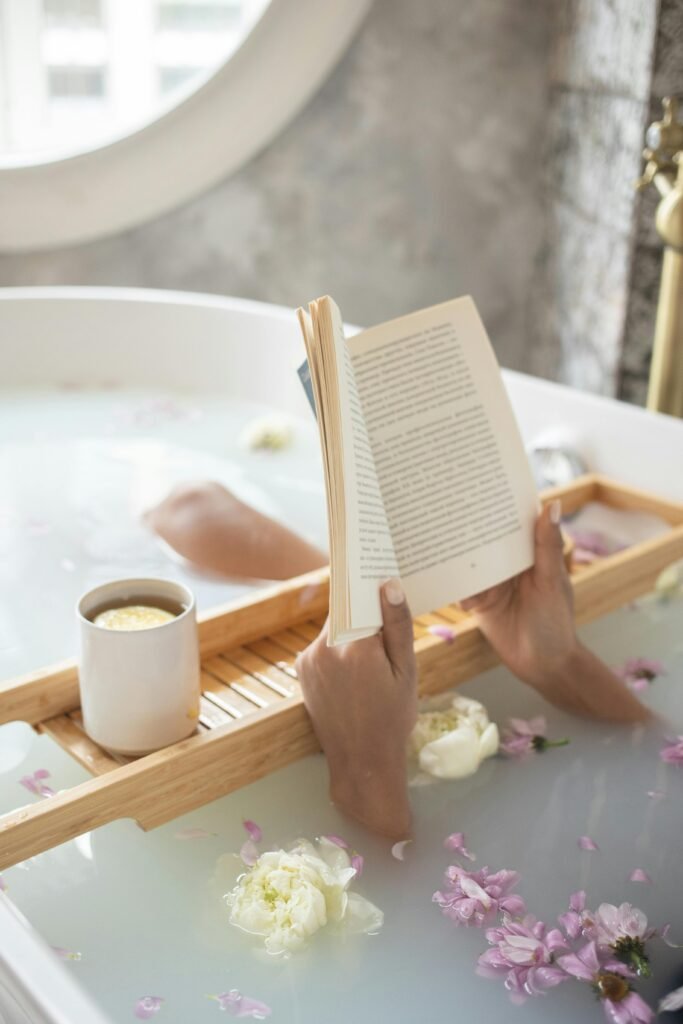
Creating a Personal Calm Corner to Retreat From Daily Stressors
Personal retreat spaces can be your sanctuary amidst the chaos of daily life. Having a designated relaxation area at home is essential for mental well-being, giving you a place to unwind and recharge.
Importance of Having a Designated Relaxation Area at Home
A personal relaxation space acts as a buffer against stress. It’s a spot where you can escape, even if just for a few moments, from the demands of work, family, and other responsibilities. This dedicated area serves as a mental cue that it’s time to relax, helping you shift your mindset from busy to calm.
Ideas for Designing Your Own Personal Calm Corner
Creating your own personal calm corner doesn’t need to be complicated or expensive. Here are some simple ideas:
Choose the Right Location:
- Find a quiet spot in your home where you feel comfortable.
- Consider corners of bedrooms, living rooms, or even unused nooks under stairs.
Comfortable Seating:
- Invest in a cozy chair or floor cushions.
- Think about ergonomic support if you’ll be sitting for extended periods.
Soothing Decor:
- Use soft fabrics and calming colors.
- Add elements like throw blankets or plush rugs to enhance comfort.
Lighting Matters:
- Opt for soft, ambient lighting.
- Consider adding candles or fairy lights for a gentle glow.
Personal Touches:
- Incorporate items that bring you joy and peace such as books, photos, or art.
- Keep a journal or sketchpad nearby for reflective moments.
Natural Elements:
- Place a small plant or flowers in your relaxation space.
- Natural elements can promote tranquility and connect you with nature.
Example Calming Activities
- Reading Nook: A comfy chair with good lighting and shelves filled with your favorite books.
- Meditation Spot: A yoga mat, meditation cushion, and perhaps some incense or essential oils.
- Creative Corner: Space with art supplies like sketchpads, crayons, or knitting materials.
Creating a personal calm corner is about making a space that feels uniquely yours—tailored to your needs and preferences where you can decompress and find peace.
Harnessing the Power of Calming Colors
Color psychology plays an essential role in home design, especially in creating calm spaces. The colors you choose for your walls and decor can deeply influence your mood and overall atmosphere within your home.
Effects of Color on Mood and Atmosphere
Different hues can evoke various emotional responses. For instance:
- Blues and Greens: Often associated with tranquility and nature, these colors can reduce stress and promote relaxation.
- Whites and Off-Whites: These shades are clean, fresh, and can make spaces appear larger. They also create a serene backdrop that doesn’t overwhelm the senses.
- Soft Pastels: Colors like light pinks, lavenders, and soft yellows can add a touch of warmth without being too stimulating.
Choosing the right color palette not only enhances the aesthetic appeal but also contributes to a peaceful environment where you can unwind.
Recommended Calming Colors for Walls and Decor
When deciding on colors to cultivate a tranquil atmosphere, consider these recommendations:
- Whites and Off-Whites: These neutral tones provide a versatile foundation that complements other calming elements in your space.
“White walls act as a blank canvas, allowing your mind to relax and focus.”
- Soft Blues: Evoking the serenity of the sky and sea, soft blues are perfect for bedrooms and bathrooms where relaxation is key.
“A light blue bedroom invites peaceful sleep.”
- Pastel Greens: Reflecting nature’s calm, pastel greens can be used in living areas or kitchens to bring a refreshing vibe.
“Green tones create an oasis-like feel in any room.”
- Muted Lavenders: Adding a hint of color without overwhelming the senses, lavenders are lovely for meditation rooms or reading nooks.
“Lavender walls gently soothe while adding subtle elegance.”
Injecting these calming colors into your home design will not only enhance visual appeal but also foster a serene ambiance conducive to relaxation.
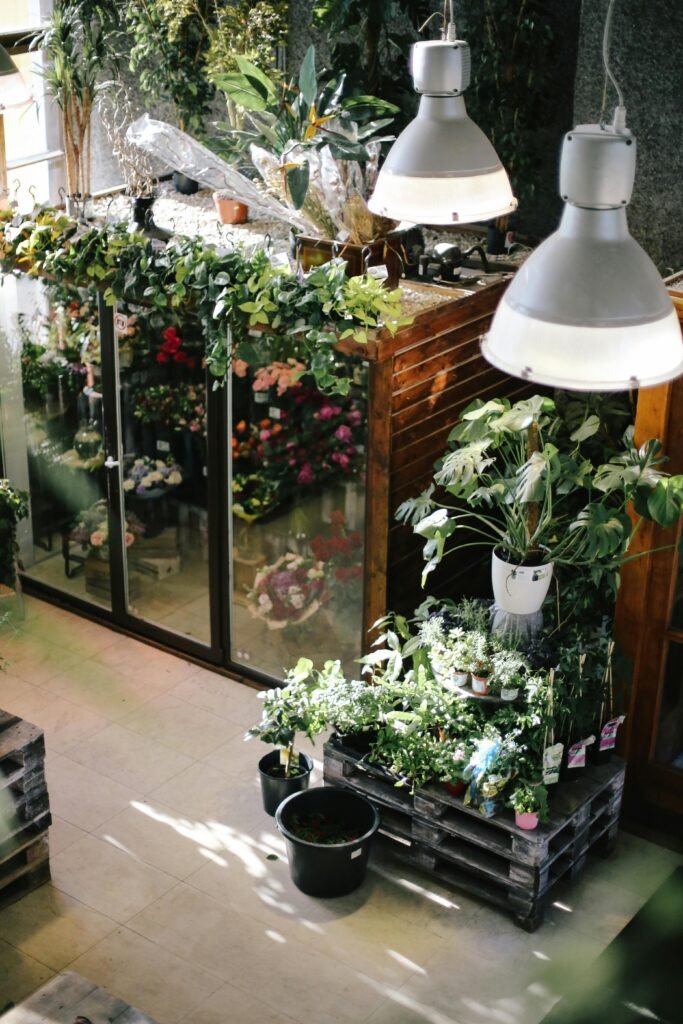
Bringing Nature Indoors for Calm Spaces
Imagine walking into a room filled with lush greenery, gentle wood tones, and the subtle scent of fresh flowers. Bringing nature indoors — also known as biophilic design — can transform any space into a serene oasis.
Benefits of Natural Elements in Promoting Relaxation
Natural elements have a profound impact on our mental well-being:
- Stress Reduction: Studies show that incorporating natural elements like plants can significantly reduce stress levels.
- Improved Air Quality: Plants act as natural air purifiers, removing toxins and improving the overall air quality.
- Enhanced Mood: The presence of greenery and natural light can instantly uplift your mood and create a sense of calm.
Suggestions for Incorporating Plants into Home Decor
Adding a touch of nature to your home doesn’t have to be complicated. Here are a few ideas to get you started:
Houseplants:
- Low-Maintenance Options: If you’re new to gardening, start with easy-to-care-for plants like snake plants or pothos.
- Statement Plants: Larger plants like fiddle leaf figs or monsteras can make a bold statement in living rooms or entryways.
Herb Gardens:
- Create a small herb garden in your kitchen with basil, mint, or rosemary. It adds greenery and provides fresh herbs for cooking.
Natural Materials:
- Use wooden furniture, bamboo blinds, or stone accents to bring an earthy feel to your space.
Hanging Planters:
- Perfect for small spaces, hanging planters add greenery without taking up floor space. Consider placing them near windows for maximum light exposure.
Terrariums and Tabletop Gardens:
- These miniature ecosystems are not only visually appealing but also low-maintenance. Place them on coffee tables or shelves for added charm.
Integrating these elements into your home decor invites tranquility and connection with nature, making it easier to unwind after a long day.
Mastering Ambient Lighting to Create Calm Spaces
Lighting plays a crucial role in creating the right atmosphere at home. With the right lighting, you can completely transform a room and make it feel warm and peaceful.
One type of lighting that is especially important for creating a calming environment is ambient lighting.
Why Lighting Matters?
Lighting is not just about being able to see; it’s also about creating a space that encourages relaxation and comfort.
Think about how nice it feels to walk into a softly lit room after a long day—it’s like an instant wave of calmness washes over you. That’s the power of thoughtful lighting design.
Types of Lighting to Consider
There are various types of lighting, and each one serves a different purpose. If you want to create a soothing space, here are some things to keep in mind:
Choose Warm Light Sources
Look for light bulbs that emit warm light, such as LED bulbs with a color temperature between 2700K and 3000K. These lights mimic the soft glow of natural sunlight during sunrise or sunset, which promotes relaxation.
Say No to Harsh Fluorescents
Fluorescent lights can be harsh on the eyes and create an uncomfortable atmosphere. Instead, opt for softer lighting options that diffuse light gently throughout the room.
Achieving Ambient Lighting in your Tranquil Spaces
Here are some practical tips you can follow to enhance your ambient lighting:
1. Layer Your Lighting
Instead of relying solely on overhead lights, try incorporating other sources of light into your space. Use floor lamps, table lamps, or wall sconces alongside ceiling fixtures to create layers of light. This way, you have more control over the brightness level and can adjust it based on your mood.
2. Install Dimmers
Consider installing dimmer switches for your light fixtures. This allows you to easily adjust the brightness level according to different activities or times of day. For example, you might want brighter lighting when reading or working but prefer softer lighting during movie nights or relaxation sessions.
3. Make Use of Natural Light
During the daytime, take advantage of natural sunlight by keeping windows unobstructed. Avoid heavy curtains that block out light; instead, opt for sheer curtains that allow soft sunlight to filter through while maintaining privacy.
Good lighting design is all about finding the right balance between different sources of light and being flexible in how you use them throughout the day.
By implementing these strategies into your home decor approach, you’ll be able to create inviting and calm spaces that supports overall well-being.
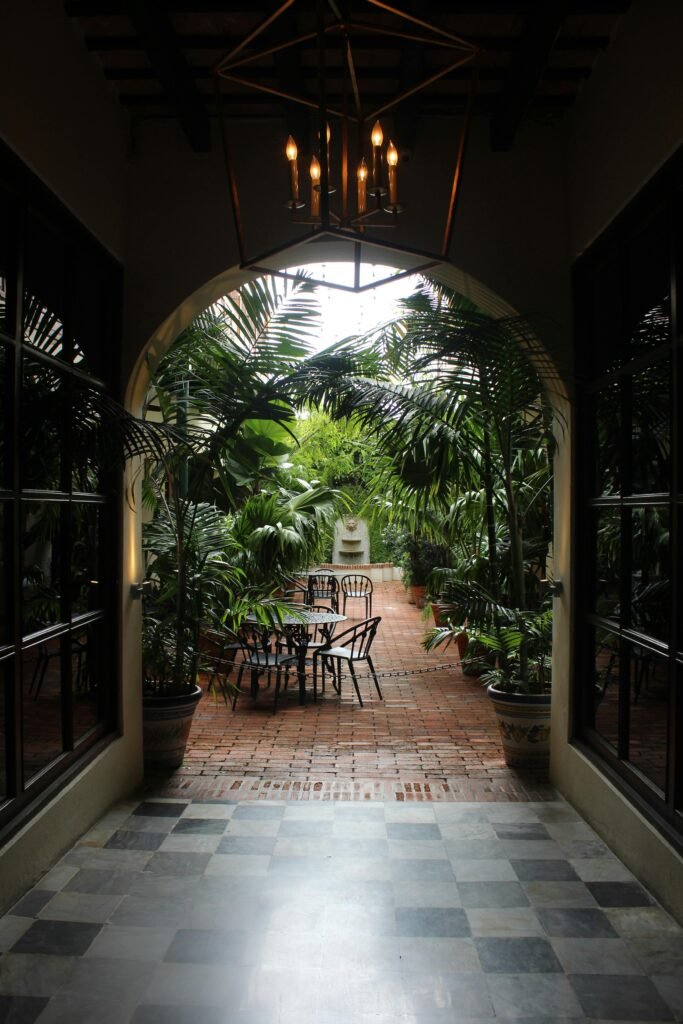
Implementing Noise Reduction Strategies to Create Your Calm Spaces
Noise can be a major disruptor when you’re striving for a calm and serene environment at home. The constant hum of traffic, noisy neighbors, or even the buzz of household appliances can elevate stress levels and hinder your ability to relax.
Impact of Noise on Stress Levels and Relaxation Abilities
- Stress and Anxiety: Persistent noise can increase cortisol levels—our body’s primary stress hormone—leading to heightened anxiety.
- Sleep Disruption: Noise pollution can interfere with sleep patterns, making it difficult to achieve restful and restorative sleep.
- Reduced Productivity: Constant background noise can make it challenging to focus, reducing productivity and increasing frustration.
Practical Noise Reduction Strategies
Adopting effective noise control measures can significantly enhance the tranquility of your living spaces. Here are some practical strategies:
Soundproofing Materials
- Acoustic Panels: These are excellent for absorbing sound and reducing echo in rooms. They come in various styles and can even add an aesthetic touch to your decor.
- Heavy Curtains: Opt for thick, heavy curtains that not only block out light but also dampen outside noise.
- Rugs and Carpets: Soft floor coverings help absorb sound, making rooms quieter.
Seal Gaps and Cracks
- Use weatherstripping around doors and windows to prevent noise from seeping into your home.
- Apply caulk or sealant to cracks in walls or floors where noise might penetrate.
Quiet Appliances
Invest in quieter models of household appliances such as dishwashers, washing machines, and air purifiers. Many modern appliances are designed to operate more quietly than older models.
White Noise Machines
These devices generate soothing background sounds like rain or ocean waves, which can mask disruptive noises and create a more peaceful atmosphere.
Furniture Placement
Strategically placing bookshelves or upholstered furniture against shared walls can help muffle sounds coming from adjacent rooms or neighbors.
Creating a serene environment goes beyond visual elements; addressing auditory aspects is crucial for achieving that sense of calm you desire at home.
Effective Organization Tools and Routines to Maintain your Calm Spaces
Keeping your home tidy and serene is easy with the right organization tools. A clutter-free environment not only looks good but also promotes mental clarity and relaxation. Here are some practical organizational tools that can help you maintain order in your calm spaces.
Recommended Organizational Tools To Keep Your Calm Spaces Tidy (Bins And Hooks, Etc.)
A well-organized home starts with using the right tools. Here are some must-have items to keep your space orderly:
1. Bins and Baskets
These are perfect for storing anything from toys to blankets. Opt for stylish designs that blend seamlessly with your decor.
“I love using woven baskets in my living room. They hide the clutter while adding a touch of rustic charm.” – A happy home organizer
2. Hooks and Pegboards
These can be lifesavers in entryways or kitchens. Use them to hang coats, bags, or even kitchen utensils.
Tip: Install a pegboard in your kitchen to keep frequently used gadgets within easy reach.
3. Drawer Dividers
Ideal for keeping your drawers neat and organized. Whether it’s your office desk or kitchen drawers, these dividers ensure everything has its place.
4. Shelving Units
Utilize vertical space by adding shelves. This helps in keeping things off the floor and making rooms appear more spacious.
Pro Tip: Floating shelves can give a modern look while providing ample storage.
5. Label Makers
It might sound old school, but labeling can significantly reduce the time you spend searching for things.
“Labels on bins have saved me so much time! I no longer have to dig through multiple containers to find what I need.” – Organizational enthusiast
Maintaining order isn’t just about having the right tools; it’s also about creating sustainable routines.
Daily Habits To Sustain Calm Spaces (5-Minute Tidy-Ups)
Incorporating daily habits can make maintaining calm spaces effortless:
5-Minute Tidy-Ups
Set aside five minutes each day to declutter high-traffic areas. This quick routine can prevent messes from piling up.
Example: Before bed, do a quick sweep of the living room—fold blankets, fluff cushions, and put away any stray items.
One-In-One-Out Rule
For every new item you bring into your home, get rid of one old item. This keeps possessions manageable and prevents clutter buildup.
Pro Tip: This rule is especially helpful with clothing and kitchen gadgets.
Nightly Reset
Spend a few minutes each night resetting your space for the next day. Clear countertops, organize mail, and prep for tomorrow’s tasks.
“My nightly reset routine includes setting out my workout clothes for the morning. It makes my mornings smoother and my evenings less chaotic.” – Routine advocate
By integrating these organizational tools and routines into your daily life, maintaining order becomes second nature. No more scrambling to clean up when guests arrive or feeling overwhelmed by clutter—just serene, organized spaces that promote tranquility.
Daily Habits To Sustain Calm Spaces For Long-Term Calmness In Your Home (5-Minute Tidy-Ups)
Staying organized doesn’t have to be overwhelming. By incorporating simple daily habits into your routine, you can effortlessly maintain a peaceful and clutter-free environment in your home. Here are some quick tips to help you keep your spaces tidy:
5-Minute Tidy-Ups
Set aside just five minutes each day to tidy up areas that tend to get messy quickly. This could involve fluffing pillows, putting away items that are out of place, or wiping down surfaces.
Nightly Reset
Before going to bed, take a few moments to reset common areas such as the living room and kitchen. Clearing away any clutter before sleep creates a calming atmosphere for the next day.
Use Organizational Tools
Make use of bins, hooks, and other organizational tools to manage everyday clutter. These handy items can be incredibly helpful in keeping everything organized and easily accessible.
Weekly Declutter Sessions
Set aside time once a week for a more thorough decluttering session. Focus on one specific area at a time and make decisions about what items you want to keep or get rid of.
Think Minimal
Adopt a minimalist mindset by only keeping things that you truly need or love. This approach not only reduces chaos but also makes it easier to maintain order on a daily basis.
By embracing these habits, you’ll be able to create and sustain an organized space that promotes long-term calmness in your home. Remember, simplicity and consistency are key!
Enhancing Your Calm Spaces With Scent Therapy Techniques
Let’s explore scent therapy techniques to help elevate your home’s atmosphere.
Aromatherapy Basics
Aromatherapy involves using essential oils to promote well-being. Scents like lavender, chamomile, and eucalyptus can have calming effects on the mind and body.
Methods to Introduce Scent
Here are some popular ways to incorporate scent therapy into your home:
- Diffusers: Ultrasonic or reed diffusers disperse essential oils into the air, creating a continuous release of soothing fragrances.
- Candles: Scented candles not only add a pleasant aroma but also create a cozy ambiance with their soft glow.
- Sprays: Room sprays can be quickly spritzed to refresh any space. Opt for natural options without artificial chemicals.
Recommended Scents
Certain scents are particularly effective at promoting relaxation:
- Lavender: Known for its stress-relieving properties.
- Chamomile: Helps in creating a peaceful environment.
- Eucalyptus: Offers a refreshing and calming effect.
Tips for Effective Use
To make the most out of scent therapy:
- Rotate Scents: Avoid olfactory fatigue by changing up your scents occasionally.
- Combine Methods: Use a mix of diffusers, candles, and sprays for a layered aromatic experience.
- Ventilation Matters: Ensure proper ventilation to keep the air fresh and avoid overwhelming scents.
Incorporating personal preferences is also key; experiment with various scents to discover what resonates with you and your space.
Consider creating a scent journal to note how different aromas affect your mood and atmosphere, allowing you to tailor your environment for optimal relaxation and comfort.
By thoughtfully integrating these scent therapy techniques, you can significantly enhance the tranquil vibe of your home.

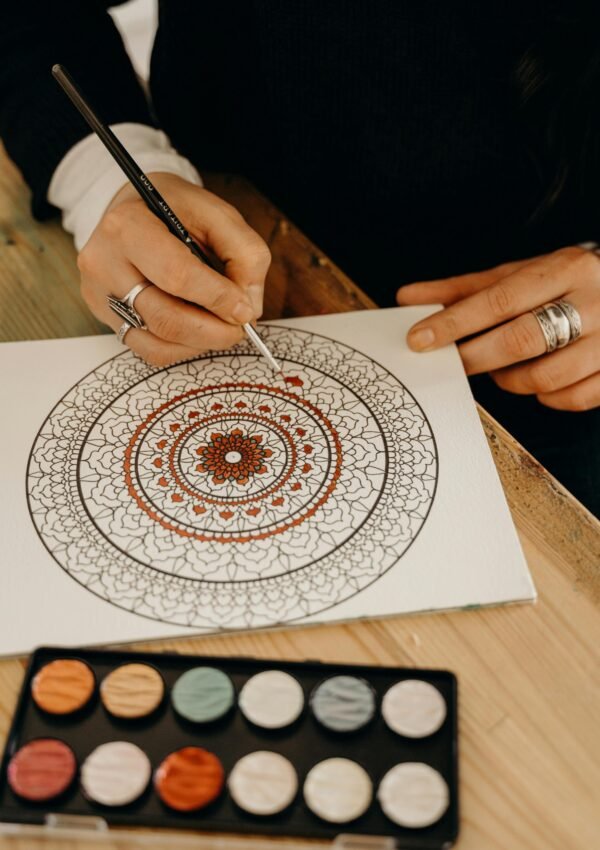


Leave a Reply